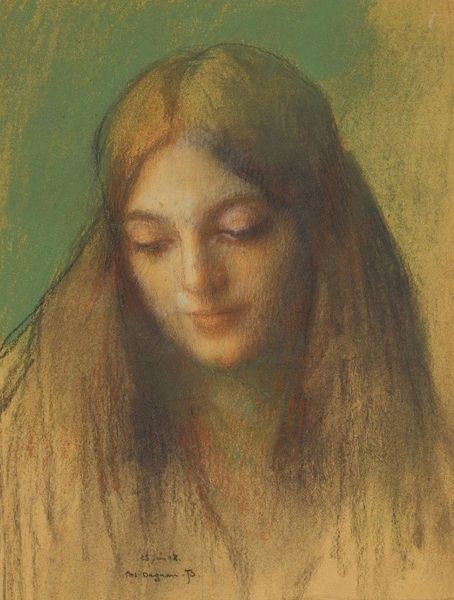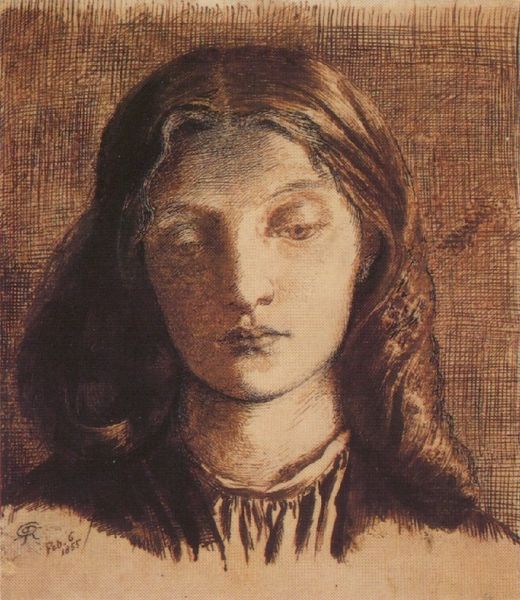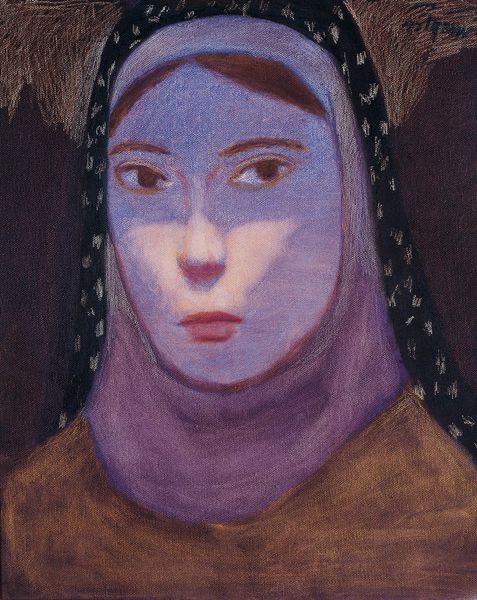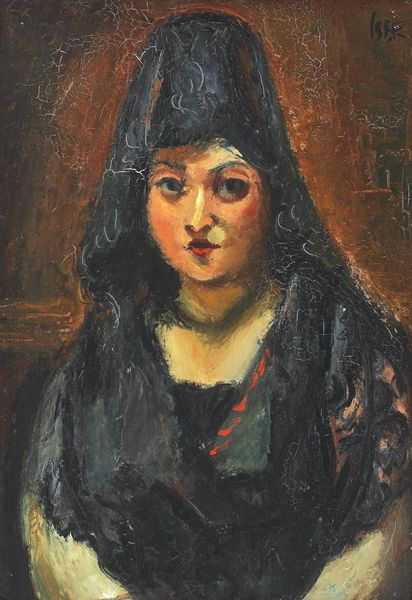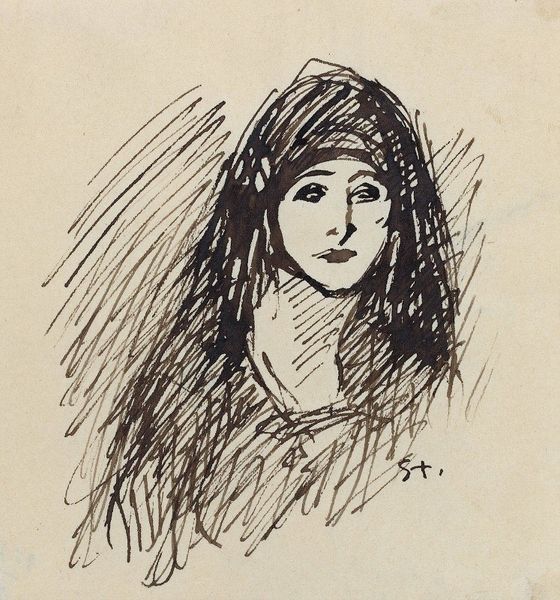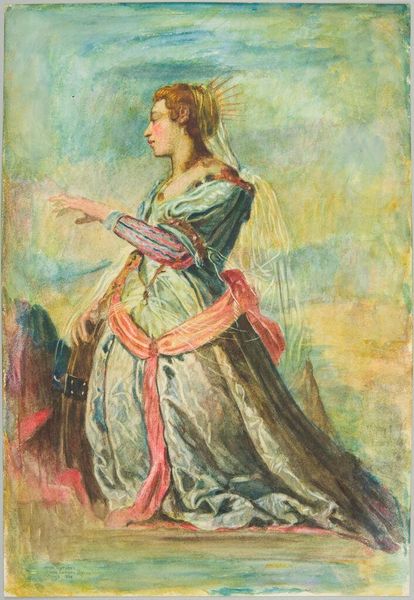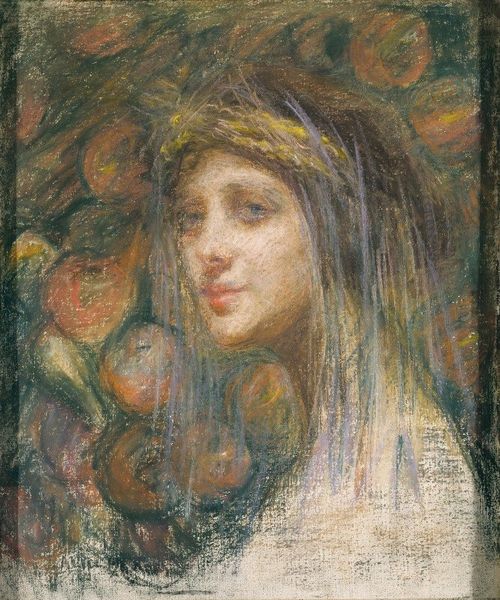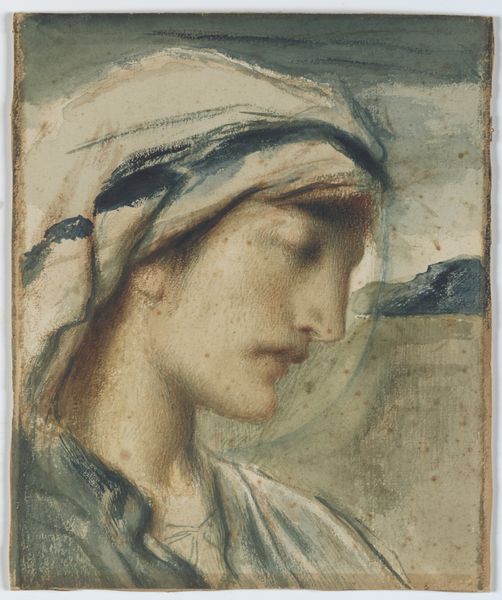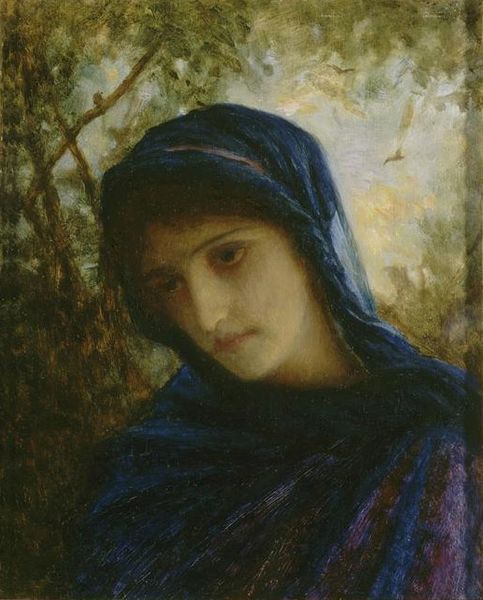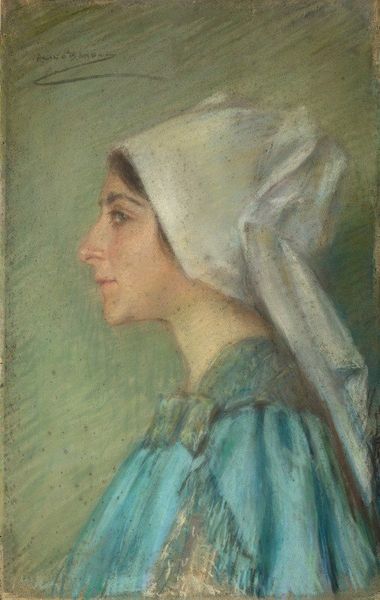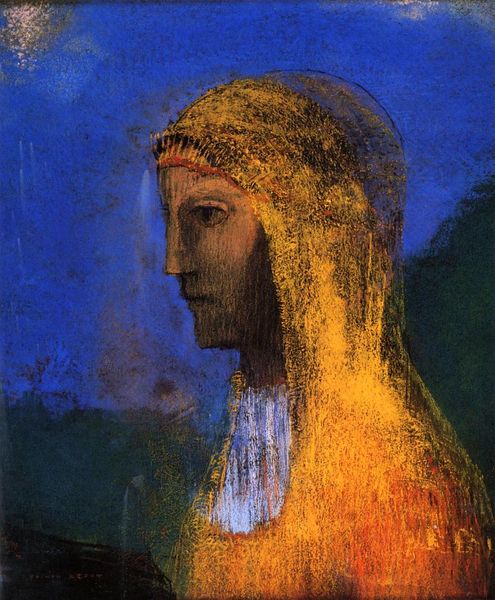
Copyright: Public domain
Curator: Looking at this portrait, there's a melancholic quality to it. A sense of quiet resignation hangs in the air. Editor: This is “Spaniard,” a pastel drawing created by Théophile Alexandre Steinlen in 1897. Steinlen, often associated with the Parisian cabaret scene, was also deeply engaged with social issues of his time. It is an interesting piece for us, considering issues of immigration in the late 19th Century. Curator: It’s remarkable how much emotion he conveys with such soft hues. The woman’s face is rendered with this almost ethereal quality, the downcast eyes suggesting a story we're not privy to. Her attire feels somewhat symbolic, cloaking her in cultural expectations and perhaps limitations. Editor: Exactly. We have to consider the broader context, too. What did it mean to portray someone as "Spanish" in late 19th-century France? How does this representation reflect or challenge existing power dynamics and cultural stereotypes prevalent then and perhaps now as well? Curator: Right. Beyond just a portrait, it opens up broader questions. The figure almost becomes allegorical, a stand-in for the broader experiences of displaced people, or those living on the margins of society due to cultural expectations, perhaps the expectations of Spanish womanhood at that time, which of course varied tremendously. The blue almost feels like a symbol itself, suggesting isolation and, or even resignation to me. It’s also worth considering that Steinlen did other drawings that touched on poverty and working classes at the time, placing this work in that context. Editor: And what was Steinlen's role, then, as a French artist depicting a “Spaniard”? His intentions and how that was perceived during this period certainly impact the reception of the work and what we read into it today, which opens up dialogue and criticism of cultural representation and historical artistic movements in France at the time. Curator: Absolutely. It's not just about the technique, but how it sits within a larger narrative of cultural representation, power dynamics, and historical perceptions. It challenges the art historical discourse. Editor: Precisely. By questioning the image's historical and societal context, we uncover these dialogues concerning identity and societal impact within these painted surfaces. I’m leaving with a clearer picture of the broader, public impact of the artwork and it’s subject at the time.
Comments
No comments
Be the first to comment and join the conversation on the ultimate creative platform.
